This page gives the circumstances (maps, finding charts, etc...) of three occultations by Pluto predicted by S.W. McDonald and J.L. Elliot, see Astronomical Journal 119 , 1999-2007, April 2000 and 120 , 1599-1602, September 2000.
These occultations occur on 01 July 2002, 20 July 2002 and 09 August 2002. The occulted stars on each date are respectively referred to as P/C 119, P/C 126 and P/C 130 by McDonald and Elliot.
The most interesting event occurs on 20 July 2002. However, and for information, some maps and comments are also given for the less promizing events of 01 July 2002 and 09 August 2002, see the end of this page.
To have more information on the general context and the scientific goals of
these observations,
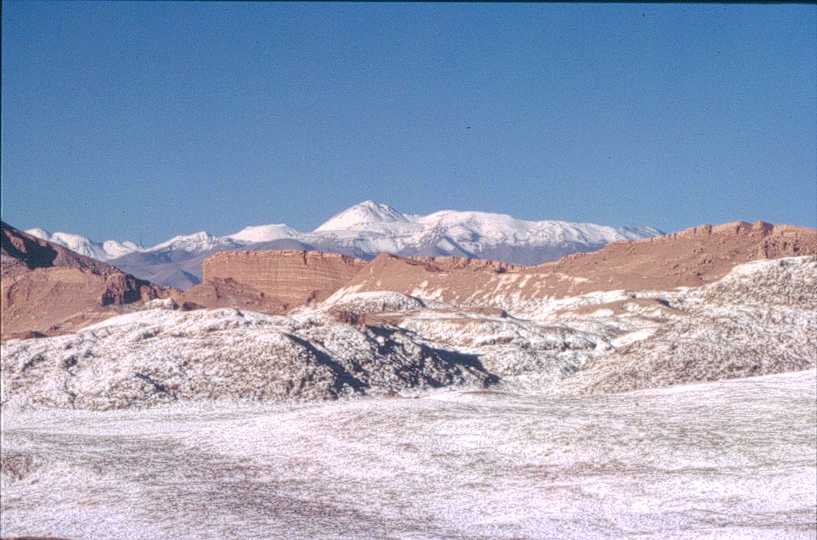
Note that there are little changes compared to the previous predictions posted on this site on April 24, 2002.
The adopted position for P126a is now (J2000):
RA = 17 00 18.0199
DEC=-12 41 41.995
This prediction assumes furthermore a (O-C) of Pluton:
D_RA * cos(delta) = -0.04 arcsec
D_DEC = -0.04 arcsec
with respect to
the
JPL Horizons ephemeris
of Pluto/Charon (PLU006 + DE405).
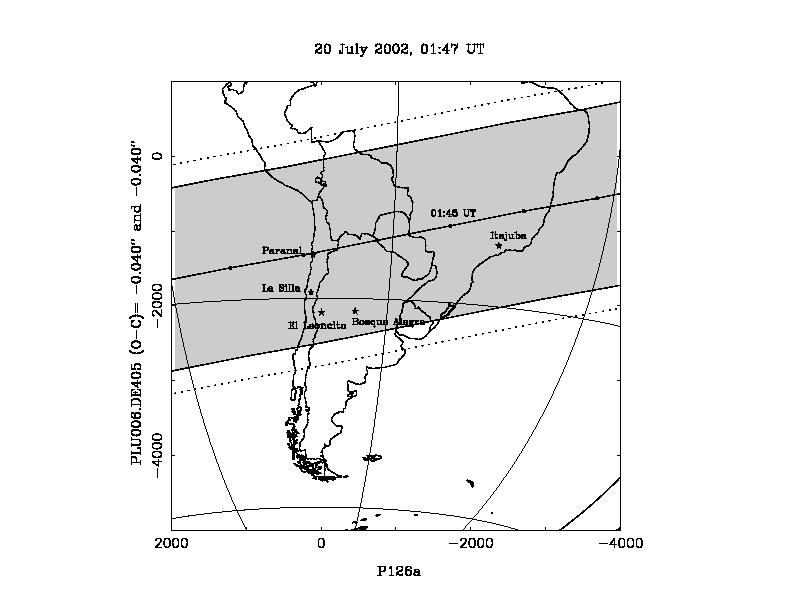
The shadow of Pluto (grey region) goes from right to left. The central line is drawn with dots giving the position of the shadow center every minute. A reference time (01:45 UT) is given in the figure. The outer dotted lines encompass the region where Pluto's atmosphere will cause a drop of signal of a few percents or larger.
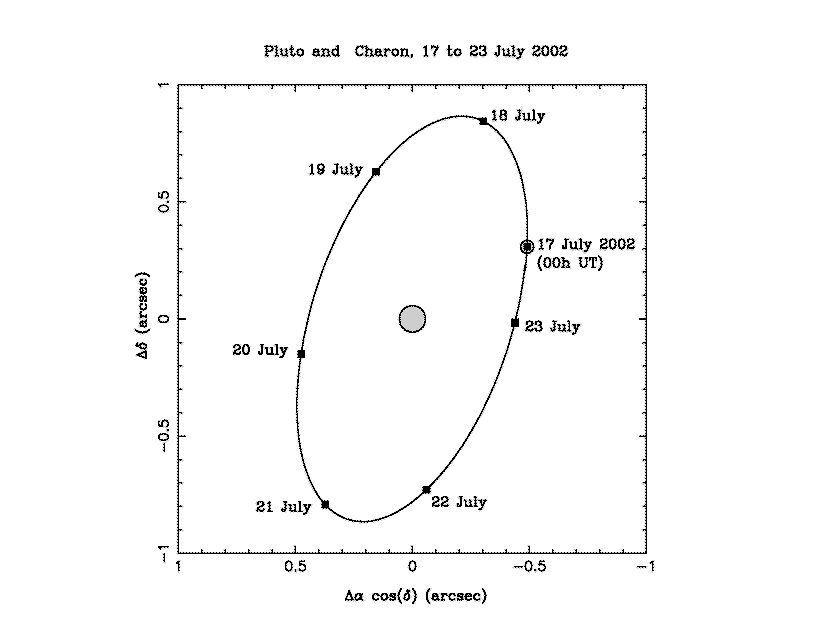
The finding chart P/C 126 is provided below, with the star at the center and a field of 8.5 x 8.5 arcmin around. The brighter star in the upper right corner is a Tycho star identified by the numbers TYC1 5651, TYC2 1568 and TYC3 1 in the Tycho main catalog (see the Vizier site ).
These maps can be generated online on the skyview gsfc NASA site.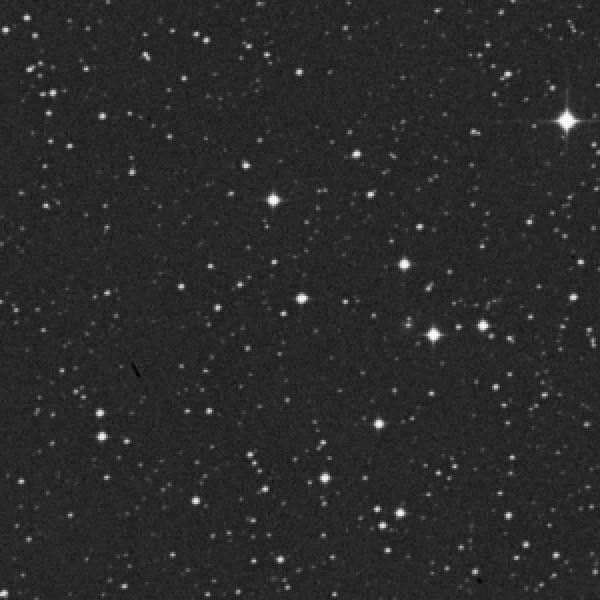
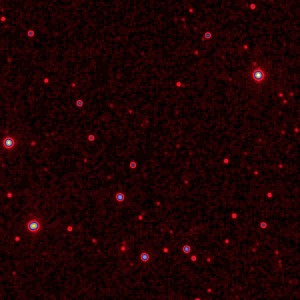
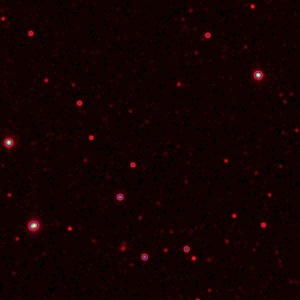
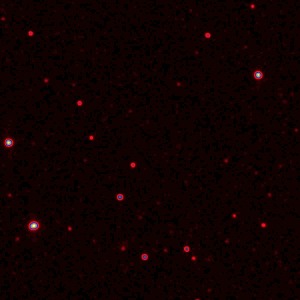
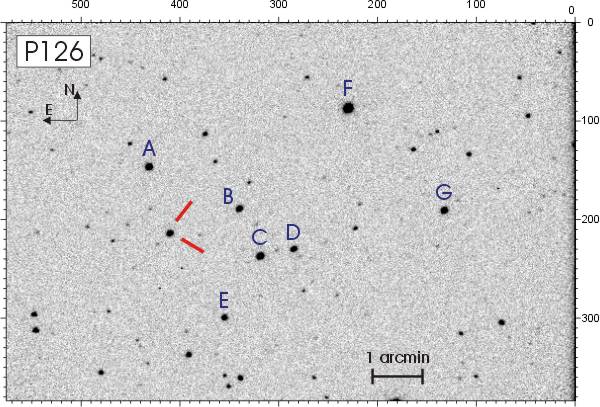
The Licancabur Volcano (5930 m) from San Pedro de Atacama, Chile. From the top
of the volcano: the crater taken from the Bolivian side and the stormy
weather...
(April 2001)
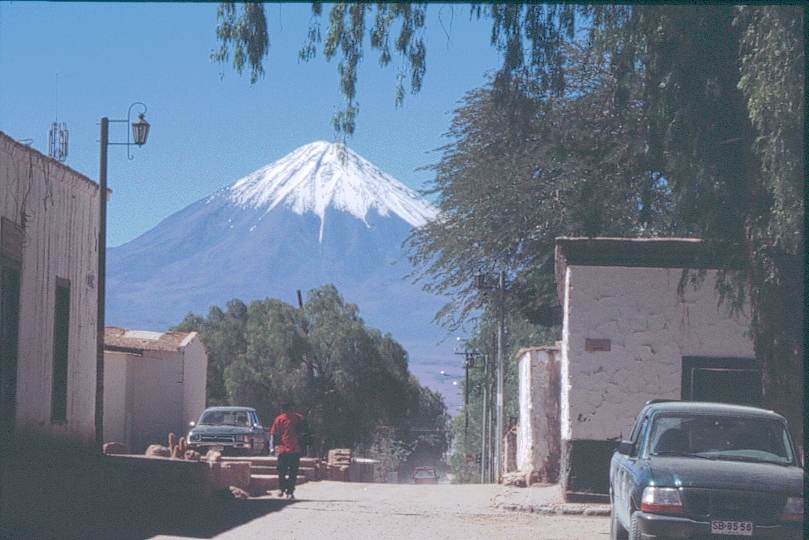
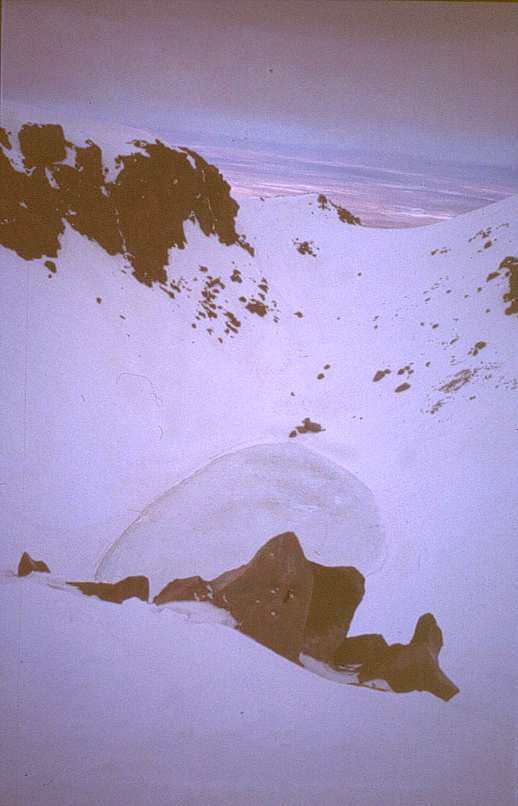

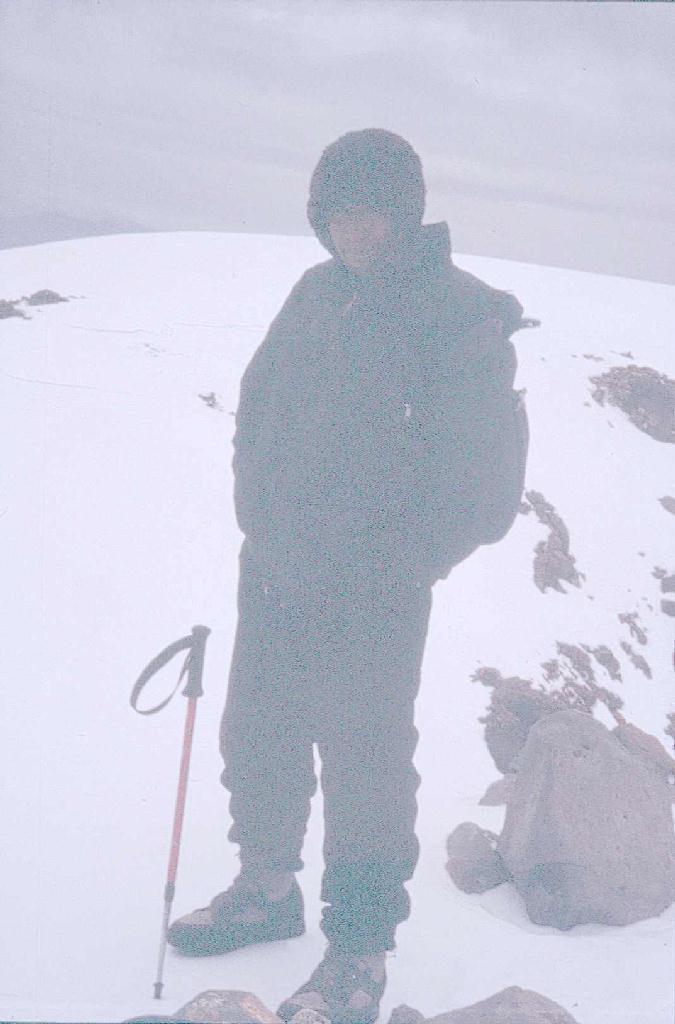
Photos B. Sicardy
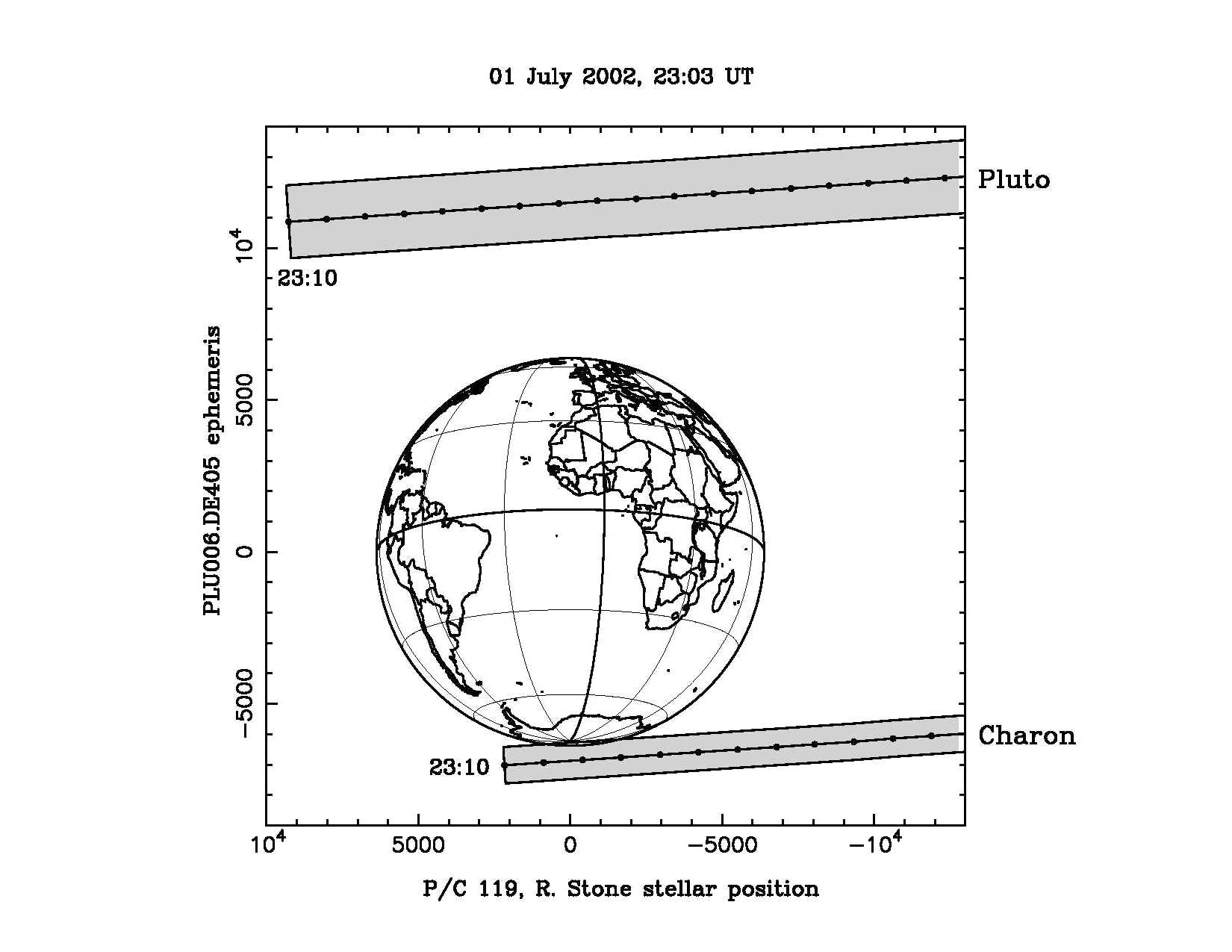
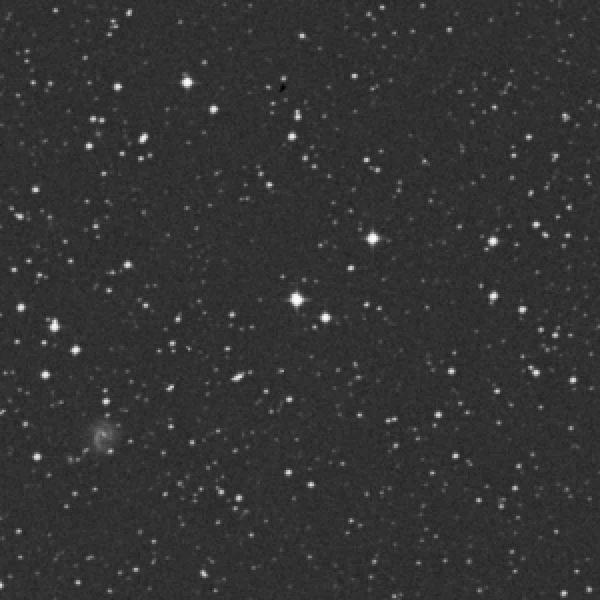
On 01 July 2002, P/C 119, V(CCD)= 11.4 : The Earth essentially goes between the shadow of P and C. I doubt that any material between Pluto and Charon could cause any dimming of the star.
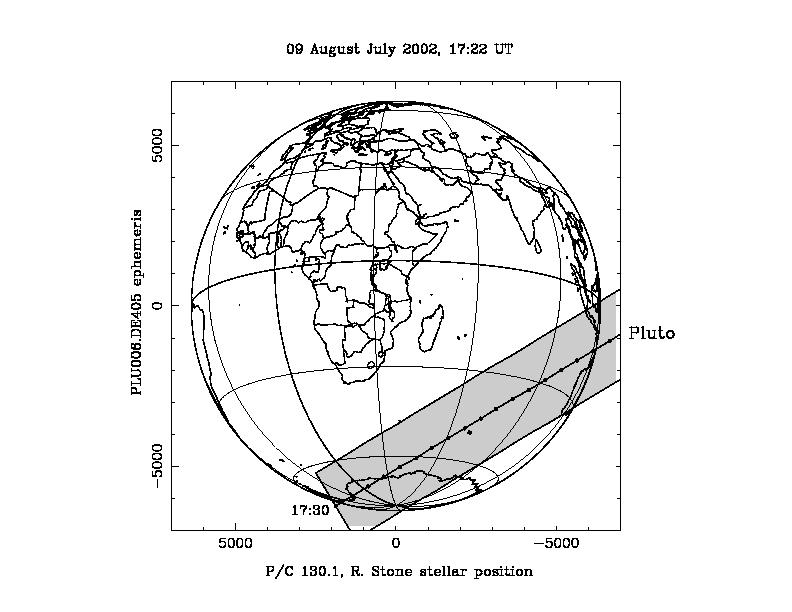

On 09 August 2002, P 130.1, V(CCD)= 14 : quite a faint star. Charon's shadow is too far south to hit the Earth and is not visible in this diagram.
